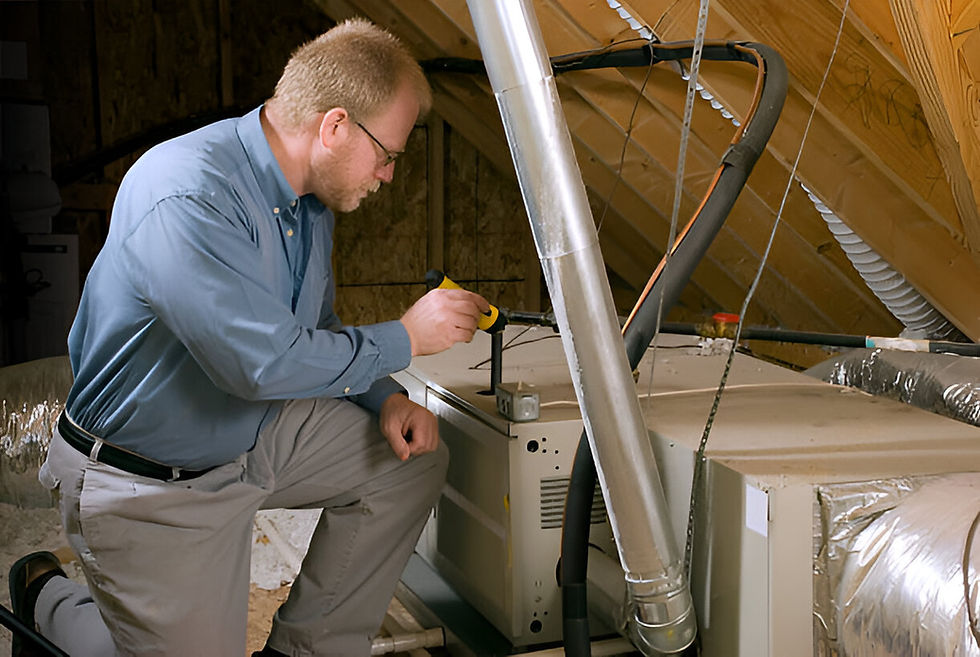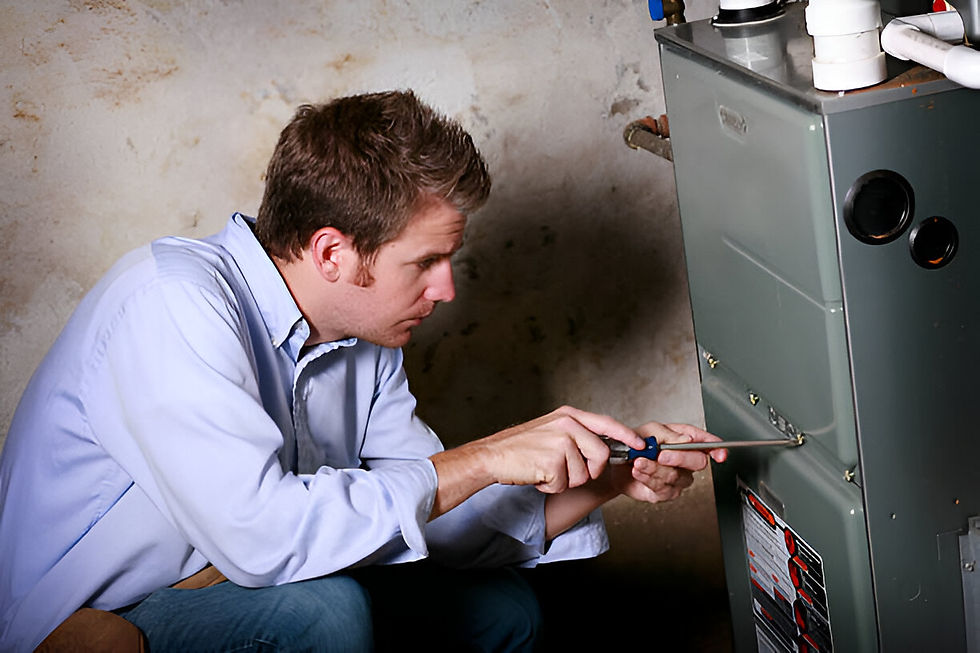New Furnace Installation in Toronto – 12-Point Homeowner Checklist
- For Saving
- Sep 20, 2025
- 4 min read
Introduction (Toronto homeowners, start here)
Replacing a furnace in Toronto isn’t a simple swap. Older ductwork, tight mechanical rooms and local permitting can turn a change-out into a systems project. This checklist lays out the essentials—licensed technicians, permit guidance, real load calculations, quiet ductwork, safe venting and a clean commissioning—so your new furnace starts strong on day one. You’ll get steadier heat, lower noise and fewer cold rooms, with documentation that protects your warranty and resale.
Answer Capsule
Safe, quiet, efficient furnace installs in Toronto require four things done right: licensed TSSA pros, permits when applicable, proper load calculation (not guesswork), and code-compliant venting/combustion air.
Get the best results by pairing the new furnace with ductwork/static-pressure checks, thermostat setup, and a first-year tune-up to lock in comfort and efficiency.
Key Facts (Toronto-ready)
Licensing: Gas work should be performed by TSSA-registered contractors with certified Gas Technicians.
Permits: Many replacements fall under stand-alone mechanical permits; confirm requirements before work starts.
Sizing: Legitimate heat-loss calculations (CSA-style) beat rule-of-thumb sizing and prevent short-cycling.
Codes: Natural gas installations must follow current safety codes (e.g., combustion air, vent termination clearances).
Comfort targets: Aim for winter humidity ~30–35% and balanced airflow to cut cold-room complaints.
The 12-Point Homeowner Checklist (what most people overlook)
1) Verify your installer’s qualifications
Ask for proof of TSSA registration and technician certification. It protects your warranty, insurance, and—most importantly—your family’s safety.
2) Confirm if a Toronto HVAC permit is required
Your contractor should advise on permit needs for “boiler/furnace replacement,” prepare any simple drawings if required, and handle submission. Permits keep inspections clean and speed up resale later.
3) Demand a real load calculation (no upsizing “just because”)
A proper calculation accounts for insulation, windows, infiltration, and exposure. Oversizing creates short cycles, noise, and hot-cold swings; undersizing leaves rooms chilly on the coldest days. Get it right on paper first.
4) Pick the burner and blower that match your home
Two-stage or modulating gas valves with an ECM (variable-speed) blower deliver steadier heat, lower noise, and better filtration. In older Toronto homes, that gentle, long run often feels warmer than loud blasts of hot air.

5) Check ductwork and static pressure before you buy
A new high-efficiency furnace on a starved return or undersized filter rack will be loud and inefficient. Ask for a quick static-pressure reading and recommendations (extra return, larger filter cabinet, short flex corrections).
6) Venting done once, done right
High-efficiency furnaces typically use plastic (Category IV) venting. Runs should pitch back to the furnace for proper condensate drainage, and outside terminations must clear windows, grade, and gas meters. Clean, code-correct venting = quiet, safe operation.
7) Combustion air and clearances
Sealed-combustion models bring in outdoor air; others need measured combustion/ventilation air. Don’t jam the furnace into a tight mech room—respect service clearances so future maintenance takes minutes, not hours.
8) Gas line sizing and shut-off placement
Your installer should confirm pipe sizing, pressure, and approved connectors for the furnace BTU demand—plus a conveniently located shut-off and drip leg. This is safety and reliability 101.
9) Condensate management (and why a neutralizer is smart)
Condensing furnaces create acidic condensate. You want a trapped drain to an approved receptor, tidy routing, and ideally a condensate neutralizer to protect your plumbing. If a pump is used, ask for a quiet one with overflow safety.
10) Electrical, controls, and thermostat profiles
Make sure your thermostat supports your chosen staging (1-stage, 2-stage, modulating) and blower profiles. Proper fan ramps reduce noise on start-up and keep heat consistent across floors. If you plan zoning later, tell your installer now.
11) Commissioning checklist (don’t skip)
Expect documented checks: gas pressure (in and out), temperature rise, vent integrity, blower speed set to measured static, and carbon monoxide readings. Keep these records with your warranty and permit.

12) Safety and maintenance plan
Install CO alarms near sleeping areas, review filter size and MERV, and lock in a first-year tune-up. A quick post-install visit can re-balance airflow once the home has “settled” into the new system.
What to prepare before your installer arrives
Access: Clear a path to the mech room, electrical panel, and floor drain.
Notes: List hot/cold rooms, humidity issues, and any allergy concerns.
Thermostat: Jot down your current model; bring up any plans for smart controls or zoning.
Paperwork: Have utility info and (if needed) permit documents ready so the team can move fast.
Why homeowners choose For Saving Home Services Inc
Licensed & insured, GTA-focused: We install to code, follow manufacturer specs, and document commissioning.
Transparent options: We price good-better-best packages with clear benefits, not buzzwords.
Quiet-first mindset: We measure static, right-size filters/returns, and set fan ramps for comfort you can hear (or rather, don’t hear).
Aftercare that sticks: First-year tune-up reminders and maintenance plans keep your investment running like new.
Service Area & Quick Links

Pro tips to maximize comfort (and lower bills)
Balance humidity: Target ~30–35% RH in winter for comfort without condensation.
Filter right, not just “higher MERV”: Too-restrictive filters spike static pressure and noise; pick the right cabinet and media.
Seal returns in basements: Leaky returns can pull air from utility spaces and spread odours/dust.
Think ahead to IAQ: If you struggle with dryness or spring allergies, plan for humidification and proper filtration during the furnace change-out to save labour later.
Protect the finish: Add a condensate neutralizer and surge protection; they’re inexpensive insurance against headaches.
Need a quote that puts comfort first?
Book a no-pressure assessment with For Saving Home Services Inc. We’ll measure, right-size, and design a quiet-running system that meets code, fits your budget, and keeps every room comfortable—winter after winter.




Comments